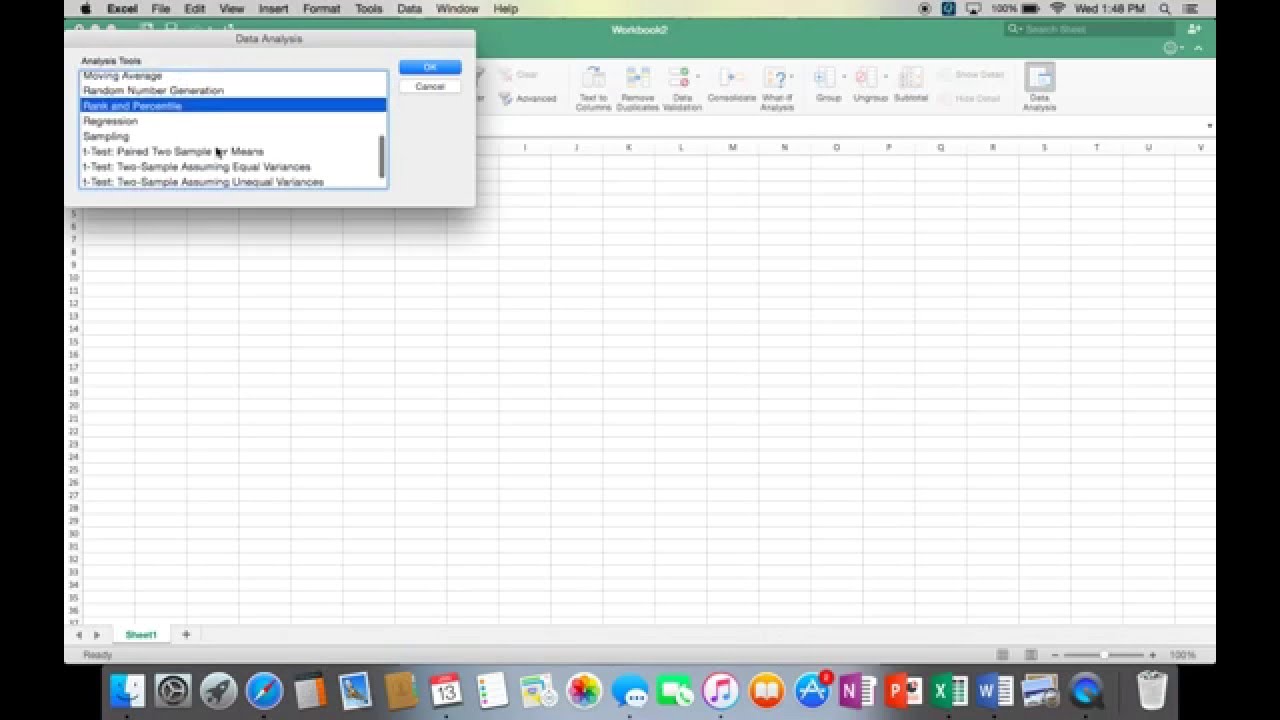
- GET ANALYSIS TOOLPAK FOR EXCEL MAC HOW TO
- GET ANALYSIS TOOLPAK FOR EXCEL MAC FOR MAC
- GET ANALYSIS TOOLPAK FOR EXCEL MAC INSTALL
- GET ANALYSIS TOOLPAK FOR EXCEL MAC CODE
The tool is an out-of-box result-driven professional tool which has been specifically designed to repair and recover your corrupted and damaged Excel files.
GET ANALYSIS TOOLPAK FOR EXCEL MAC INSTALL
If you are prompted that the Analysis ToolPak is not currently installed on your computer, click Yes to install it.If Analysis ToolPak is not listed in the Add-Ins available box, click Browse to locate it.
GET ANALYSIS TOOLPAK FOR EXCEL MAC HOW TO
How To Get The Tool Analysis Toolpak For Excel Machining

However, you can download a free third-party tool that offers similar functionality: StatPlus:mac LE.

GET ANALYSIS TOOLPAK FOR EXCEL MAC FOR MAC
The Data Analysis Toolpak was removed in Mac:Office for Mac 2008. Click to select the check box for Solver.Xlam. The functionality is aimed at financial, statistical and engineering data practitioners.Ĭlick Tools - Select Add-Ins. The Analysis ToolPak is an Excel add-in that provides that provides data analysis tools to make developing complex models easier. You can test other tools by selecting them in the data analysis tool selection window, configuring values located in your spreadsheet and running a new report.
GET ANALYSIS TOOLPAK FOR EXCEL MAC CODE
That could suggest that the problem is really elsewhere in a part of your code that you haven't posted.

Have you tried what I did in my opening paragraph above, where I was unable to get your error. If it does work manually, then have you tried recording the steps using the macro recorder? without the macro attempt, to ensure that it really is the macro at fault? Have you tried running the regression manually, i.e. I copied your code into a module, filled range CE2:CF10 with some random numerical data, ran that bit of code, and it worked quite OK.


 0 kommentar(er)
0 kommentar(er)
